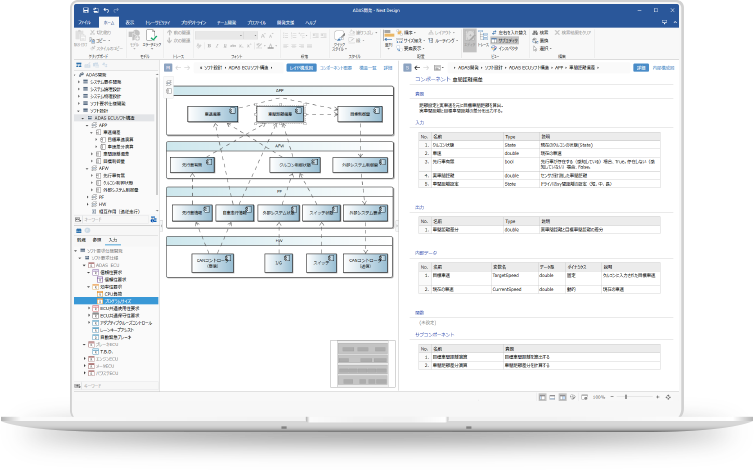Launched Next Design, a next-generation system software design tool, for general sales.
Denso Create Corporation (Head Office: Naka-ku, Nagoya, Japan; President: Shinnosuke Hayashi), a leading developer of embedded software for the automotive industry, today announced the general release of its design tool "Next Design" on September 16, 2020. At the same time, the company began offering a 90-day free evaluation version of Next Design. In addition, a web seminar will be held to introduce and demonstrate Next Design.
Next Design was created as a design tool that can speed up the development cycle by using a tool to digital transformationthe design process onsite in situations where large, complex systems and software must be developed concurrently.
Next Design can be made into a dedicated design tool by adapting the "meta-model," which defines the structure and relationship of design information for each process, and the "view definition," which is a diagram and document representation for expressing the meta-model, to the viewpoint and use of the development site.
This allows design methods and processes unique to the development site, such as specifications and design documents that have been expressed in Word/Excel or UML/SysML, to be organized and tooled, enabling the sharing of design data across the organization while maintaining traceability.
Furthermore, by developing extensions that can be freely extended, it is possible to automate various tasks such as design verification and linkage with other tools.
Features of Next Design
- Non-programmable and customizable to design tools dedicated to the development site
- Various expressive capabilities, from Word-like document display to Excel-like grids, diagrams for a bird's eye view, and more
- Speedy and intuitive editing
- Traceability management functionality comparable to that of dedicated tools is provided to record traceability while designing
- Reusing designs in product line development
- Supports large-scale team development by dividing the scope of work for development by multiple teams and integrating with configuration management systems
- Develop extensions that allow users to extend their own functionality for further customization and efficiency
- Documents are output in formats that can be viewed by other tools (Word/PDF/HTML/image formats)



